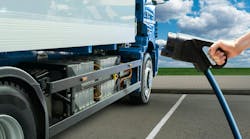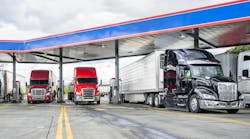Given the roller-coaster ride fuel prices have been on these last few years, environmental and air quality considerations have taken a back seat to economic savings, driver recruitment and retention, and capacity considerations. In addition, U.S. Environmental Protection Agency (EPA) 2010-compliant technologies have been working well for fleets as they provide significantly lower emissions, solid fuel economy, and reduced maintenance costs compared with their predecessors. While engine emissions have not been a front-burner issue in the last couple of years, this is about to change as a dizzying number of new air quality regulations and policy actions will hit the radar in 2015.
The final U.S. EPA rulemaking process on the National Ambient Air Quality Standards (NAAQS), where the ozone standards bar will be lowered to 65 or 70 ppm, will wrap up in October 2015. At either level, a big bull’s-eye will be placed on the heavy-duty trucking industry, as this sector is one of the largest sources of ozone-forming emissions (primarily NOx). Subsequently, local and state-level regulators and policymakers will be looking to develop new regulations, programs, policies, incentives, and other means by which to improve the environmental performance of the existing fleet.
At the federal level, U.S. EPA and the National Highway Traffic Safety Administration are working on the development of their Phase 2 greenhouse gas rulemaking process whereby new carbon emissions reductions will be required across the heavy-duty trucking sector by 2025. While the final reduction levels are still being debated, no matter where they fall, more expensive—yet more efficient—heavy-duty trucks will result.
In California, the state’s Low Carbon Fuel Standard (LCFS) will likely be reauthorized in July. The LCFS provides strong financial incentives to those investing in lower carbon fuels such as natural gas. The opportunity to generate financial credits under the LCFS program by a fleet running natural gas trucks in their operation can be quite significant and make a material impact to an operator’s bottom line. With Washington, Oregon, and others looking to soon implement their own statewide LCFS programs, the financial impact of these air quality-focused programs will only continue to flourish.
As is the case with all environmental programs, there will be both winners and losers. Some will bear increased costs for compliance, while other programs will offer the chance to reap real rewards. Foresight and preparation will be the keys to determining which side your company will end up on. Those that prepare ahead of time will be well-positioned to benefit from the incentives that will be available and the more efficient technologies now being developed.
To stay informed on these cutting-edge and often complex issues, I encourage you to attend the upcoming Alternative Clean Transportation (ACT) Expo in Dallas from May 4-7, as the four-day conference offers the perfect opportunity for fleets to connect the dots on impending air quality regulations and incentive programs. As a significant number of U.S. metropolitan areas will fall into a nonattainment status when the new NAAQS are finalized in October, clean-burning AFVs will become an increasingly important part of the solution for clean air and reduced operating costs.
Erik Neandross is CEO of Gladstein, Neandross & Associates (GNA), the clean transportation and energy consulting firm that organizes the Alternative Clean Transportation (ACT) Expo. Learn more at www.gladstein.org and www.actexpo.com.


